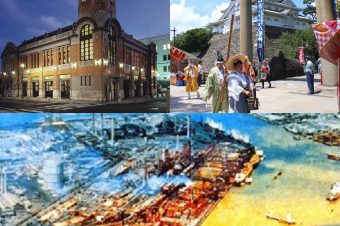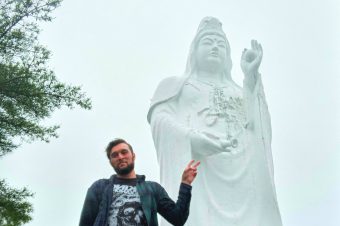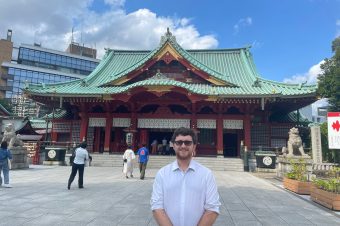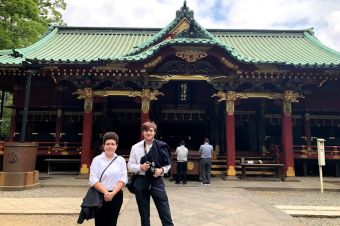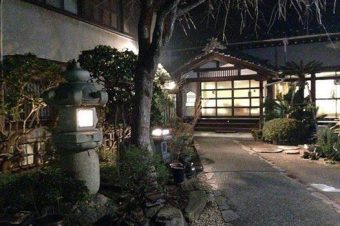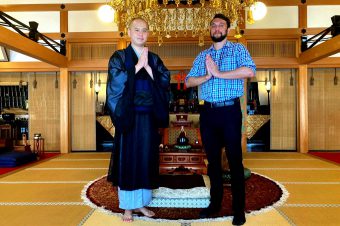Begin by getting off at the Minami-Senju Station. Walk three minutes to the Enmei-ji Temple.
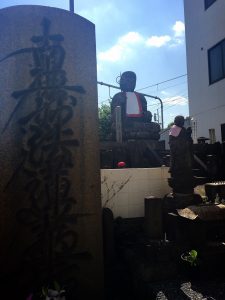
Enmei-ji Temple- The Enmei-ji Temple is a site where many executions took place during the Edo period. Back when these grounds were used as the Kozukappara Excecution Grounds, the property extended much further into the area that is now covered by railway lines and the station. It is estimated that between 100,000 and 200,000 people were put to death at this spot. The burials were thought to be “cheap” and therefore a large statue of Kubikiri Jizo (“neck chop” jizo) is placed at this temple to offer solace to the souls who lost their lives there. Many of the people who were executed here were famous historical figures, such as political activist Yoshida Shoin, reformist samurai Hashimoto Sanai, and ex-geisha Yoarashi Okinu, who poisoned one of her clients after she fell in love with a kabuki actor.
Walk just one minute down the street to the Eko-in Temple.
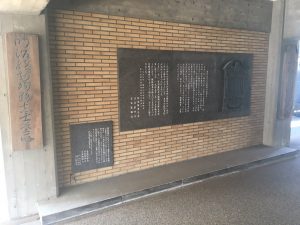
Eko-in Temple- The Eko-in Temple holds the graves of many famous samurai and notorious criminals who died in the Edo period. The temple also holds a memorial to Takahashi Oden, a woman who was accused of poisoning her husband. In 1879, Oden was the last criminal to ever be beheaded in Japan.
Walk about 9 minutes to the Susanoo-jinja Shrine. On your way you will pass the Kotsu-Dori Shopping Street.
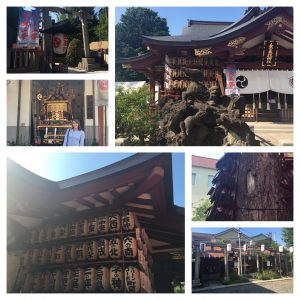
Susanoo-jinja Shrine- This tutelary shrine guards the largest area in Arakawa City. The mikoshi, or portable shrine, of the Susanoo-jinja Shrine is famous for being very large and beautiful. The shrine is also famous for a tablet stone with an inscription of haiku poetry. This poem is extracted from “Narrow Road to the Deep North,” written by Matsuo Basho, a haiku poet of the Edo Period.
Walk about four minutes to reach the Senju Ohashi Bridge.
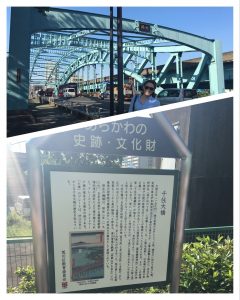
Senju Ohashi Bridge- This bridge was the first bridge that was permitted to be built over the Sumidagawa River. The bridge was built in 1594 and was used mostly for transporting lumber and other heavy commodities.
Walk about six minutes to the Arakawa Furusato Museum.
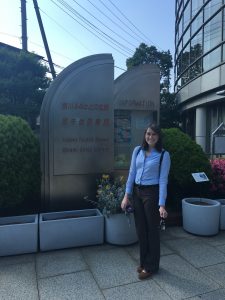
Arakawa Furusato Museum- This museum was created to study the history and culture of Arakawa City. Within the museum there is a restored house from 1966 to show what life was like at the time.
Walk three minutes to a brick fence.
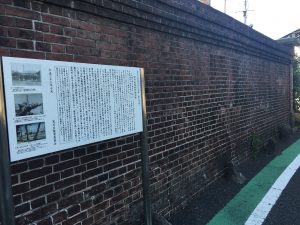
Brick Fence- This brick fence is a historical relic which was a part of the first national wool fabric factory in Japan.
Walk six minutes to the Arakawa Sogo Sports Center. You will pass the Kandou Shopping Street and the Minami-Senju Roku-Choe Honchoukai Shopping Street on your way there.
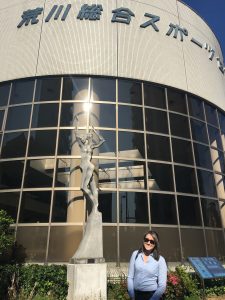
Arakawa Sogo Sports Center- This facility is a gigantic building filled with sports equipment, pools and gyms. The building sits on the spot where an old professional baseball ballpark used to be. On the first floor you can find historical artifacts of the old ballpark.
Walk eight minutes to the Entsu-ji Temple. You will pass the Taiyou Yanagai-Dori Shopping Street on your way there.
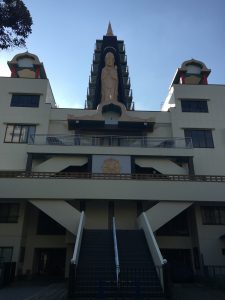
Entsu-ji Temple- On the property of this temple is a large black gate that was moved here from the Kanei-ji Temple in Ueno. At that site, the Battle of Ueno in 1868 broke out and now bullet holes can be seen covering the gate from the fight. Memorial services were held at the Entsu-ji Temple in honor of the samurai warriors that belonged to the Shogi-tai unit that fought in the battle.
Walk five minutes to the Minowabashi Tram Station. You will pass the Joyful Minowa Shopping Street on your way there.
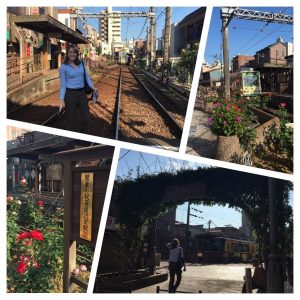
Minowabashi Tram Station- This is the initial and terminal station of the “Toden Arakawa Line” which extends from Minowabashi to Waseda. The station is cute and old-fashioned, surrounded by small shops and businesses. The station, as well as the rest of the railway, is covered in roses. By the end of the ride, you would see approximately 13,000 roses of 140 different kinds.
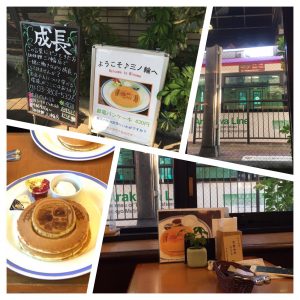
Next to the station there is an adorable café called Kohikan. This is a great place to stop, rest, and eat pancakes that come with the image of a train stamped onto them. They are just as adorable as they are delicious!
Walk four minutes to your final stop, the Jokan-ji Temple. You will pass the Minami-Senju Shopping Street on your way.
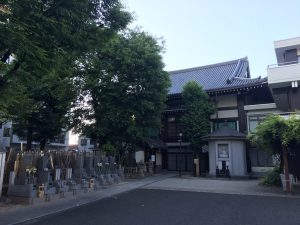
Jokan-ji Temple- In 1855, there was a large earthquake in Edo. The earthquake caused several buildings to crumble and fires to break out. The area of Yoshiwara was destroyed in the quake and its aftershocks. Yoshiwara was an area where prostitution was legal and thousands of women were enslaved as sex workers. Many of the women were sold there by their families as children or were kept there under debt that was impossible to repay. The area only had two entrances/exits which made evacuation during the quake nearly impossible. Due to such a high number of deaths during the quake, the lives and bodies of these “lower social class” women went unnoticed and were not given proper burial or ceremony. Instead, 25,000 women were brought to the Jokan-ji Temple and dumped in a pile. Ever since, the temple has been nicknamed the “Throw-away Temple.” While the events of this story are absolutely horrifying and sad, many believe that the good and evil forces of Yin and Yang caused the earthquake as a force to bring change to the evil area of Yoshiwara. After the quake, the area fell into poverty and the prostitution business dwindled. Unfortunately, many women suffered through the occurrences at Yoshiwara for a long time after, but the suffering was significantly reduced.
